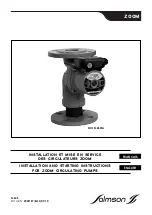
Forward External. This feature operates in the same manner as a non networked
system with the exception that, because calls across a network link are trunk calls,
network calls do not follow the ICM FWD EXT ON/OFF setting in MMC 210. It is
therefore suggested that this setting be set to ON in a networked switch to avoid
confusion in operation between networked and non networked calls.
Call Intrusion (Barge In). This feature operates in the same manner as in a non
networked switch.
Call Offer/Call Waiting (Camp On). This feature operates in the same manner as in
a non networked switch. When a called station is busy the caller can press a camp
on key and appear as a ringing call on the second call button. The Auto camp on
feature will not work on calls across a network link if set to ON in MMC 110.
Call Transfer. Calls answered in one network node can be transferred to a station or
station group in another network node.
Transfer Retrieve. Calls on Transfer Hold during a screened transfer can be re-
trieved by pressing the call button for that call.
Transfer Recall. Calls transferred across a network link will recall to the transferring
station after the originating systems transfer recall timer expires. After recalling, if
not answered prior to that systems attendant recall timer expiring, the call will re-
call to that systems designated operator group. Attendant recalls will not recall to a
‘Centralized Attendant”.
DID with Pass Through. Incoming DID, DNIS or DDI calls can be routed through one
switch across a network link to be processed by the DID table of the destination
switch.
Do Not Disturb (DND). This feature operates in the same manner as in a non net-
worked switch. There is an option in MMC 823 to determine the type of DND tone
sent across the network link.
Caller ID. Caller ID in its various forms that are currently available (Analog CID Name
and Number, ANI Number, PRI Name and Number and BRI number) will be trans-
ported across the network link with the original call.
Centralized Attendant. This feature basically allows a user in any switch to dial “0”
and ring at the designated Central attendant group. Each system on the network
requires its own designated attendant group for local usage, recalls and the like.
Intercom Calling/Uniform dialing plan. Station to station and station to group calls
can be made across the network link without having to dial an access code for a
call within the network. LCR can also be programmed to route calls across a net-
work link to access local trunks in another networked system.
4.21
Summary of Contents for iDCS 500
Page 5: ...iDCS 500 GENERAL SYSTEM DIAGRAM 1 1...
Page 28: ......
Page 34: ......
Page 88: ......
Page 126: ...N O T E S...
Page 127: ...N O T E S...
Page 128: ...N O T E S...














































